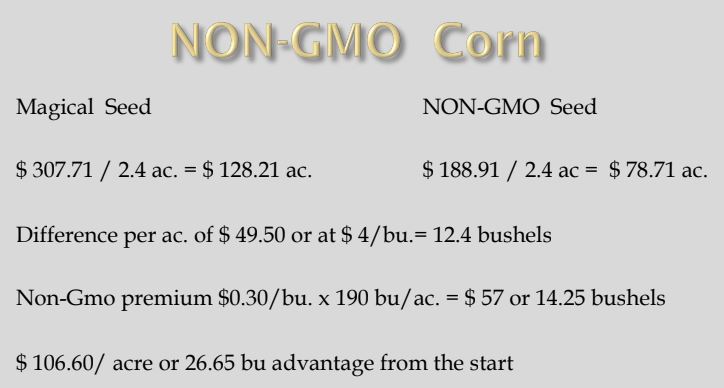In the midst of a crisis that few alive have experienced, the future of agriculture is being debated while, on the ground, innovators are populating the debate with examples.
In the midst of a melt-down in commodity pricing, thanks to trade restrictions, historically low fuel prices and the pandemic, the future of the crop monoculture is teetering. Dan Towery, an Indiana crop advisor and soil conservation consultant said this yesterday: “The price paid to corn growers this year is between 25 and 50 cents below what it takes to break even.”
But in the next sentence, Dan said that those who have found their way to growing non-GMO, organic corn are getting a premium price for their product: about $12/bushel versus about $3!”
The era of “regenerative ag” has begun and because everybody says you should “start small”, it’s a model that brings hope: hope for better incomes, hope for a healthier soil, and hope for a loyal, local customer base that demands high quality and rewards it with patronage.
The next couple blog posts will outline some ways to start small, and will also point to those who started a decade ago and are showing how it can be applied equally to large scale farming.
But, at the bottom line, the common denominator is healthy soil, and doing agriculture in concert with nature. Once the tide is turned, away from conventional tillage and towards no-till and cover crops, the next steps will be done in stride with nature’s wishes, not ignoring them. For example, when the soil comes into balance, you need less equipment, fewer passes over the field, less inputs of fertilizer, herbicides and fungicides. With healthier soil, productivity will improve as costs are reduced. With less hours spent trying to break even, more hours can be spent starting new, profitable initiatives, driven more by local demand than by a broker hundreds of miles away.
The switch from conventional monocrop agriculture to something more diverse and more sustainable is not an overnight, “presto-chango” affair. But the nice thing is, the benefits can been seen in just one year, watching how cover crops begin to make a difference in how the soil feels and how the corn and beans respond.

